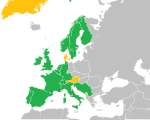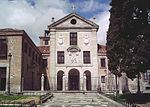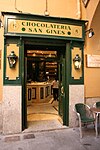Plaza de Isabel II

The Plaza de Isabel II (also known as Plaza de Ópera) is a historic public square between the Sol and Palacio wards in the central district of Madrid. The plaza is at the convergence of Arenal Street (from the Puerta del Sol) and the minor roads Arrieta, Calle de Campomanes, Caños del Peral, Escalinata and Vergara. It was formed by filling the ravine created by the Arenal stream and the source of the Fountain of the Canals of the Pear Tree. The square occupies part of the site where the old Theater of the Caños del Peral stood between 1738 and 1817.The Teatro Real opera house, which sits on the western edge of the plaza, was ordered to be constructed by Isabel II for whom the plaza is now named.
Excerpt from the Wikipedia article Plaza de Isabel II (License: CC BY-SA 3.0, Authors, Images).Plaza de Isabel II
Plaza de Isabel II, Madrid
Geographical coordinates (GPS) Address Nearby Places Show on map
Geographical coordinates (GPS)
| Latitude | Longitude |
|---|---|
| N 40.418055555556 ° | E -3.7094444444444 ° |
Address
Ópera
Plaza de Isabel II
28013 Madrid (Centro)
Community of Madrid, Spain
Open on Google Maps











